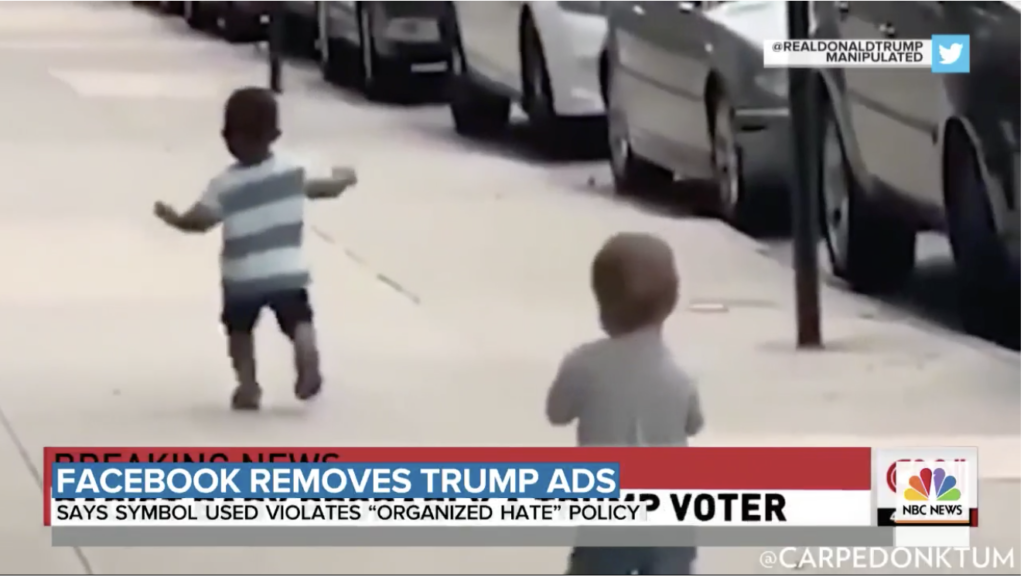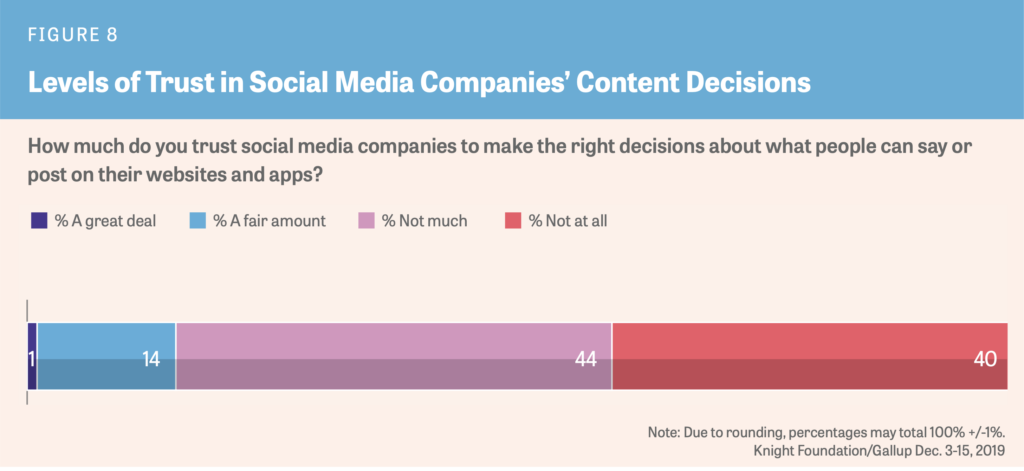I woke up this morning confused about whether the adorable viral video of the two toddlers embracing may be fake. At first glance, it is not easy to decipher whether the President’s tweet or Twitter’s response is accurate. Both are plausible. This is not a political or racial issue – but one about deciphering facts. One that is bubbling up for big tech.

There have been so many fake photos and stories widely circulated in recent months, the story about about face masks being bad for our health, a good example. It is causing me, and likely you, to doubt headlines.
We are increasingly reliant on social media for our news and information gathering, no matter our background.
According to a Pew Research Center study, more Americans are getting their news from social media. Facebook was the most popular social media news source, with 71 percent of U.S. adults saying they use the site.
Yet, at the same time, research also shows that the majority of Americans do not trust social media companies to make the right decisions about what content appears on their sites or apps.
We are increasingly using social media platforms that we don’t fully trust in making content decisions for us.

While Facebook has tools to warn about stories with “disputed” accuracy, the company’s efforts have little effect, according to an MIS quarterly study. Twitter has banned political ads but bots can continue to fuel conversations. (Want to spot a bot? I like Botometer developed by researchers at the University of Southern California and Indiana University helps identify bot accounts)
The impact of this is significant because:
“…if the facts that you do have are polluted by fake news that you truly believe, then the decisions you make are going to be much worse.”
Texas McCombs Assistant Professor Patricia Moravec in “Fake News Can’t Be Flagged” article
Other than avoiding social media, there are things you can do to empower your news gathering. It can be difficult to spot fake news, as publishers are savvy, but there are some themes that can be found in fake news stories.
COMMON TRAITS OF FAKE NEWS STORIES
- SHOCKING headlines!!! in ALL CAPS or with EXCLAMATION POINTS!!!
- Phony or look-alike links emails from goggle.com or articles by Newyorktimes.co can be easily overlooked
- Come from unknown people or sources The “About” section helps you learn more about a source
- H A V E unusual formatting or errors Ads at the top, misspellings or awkward layouts are another clue
- Contain gripping photos False news stories often contain manipulated images or videos
- Are often out dated
- Don’t site sources Lack of evidence or sourced experts may indicate a false news story. (See how I sourced my facts in this article from reputed organizations?)
- Evoke an emotional response If you are outraged, it may be fake
Sources: NYTimes, Facebook and CommonSense Media
BEFORE SHARING, “SNOPES IT”
Before sharing an article that seems too good or bad too be true, verify it. Use reputable sources to corroborate a story. Snopes.com is a great resource for fact checking. See how it dug into the circulating story about the Aunt Jemima founder dying a millionaire?

UNBIASED SOLUTIONS ON THE HORIZON
Tech companies have a place in handling misinformation but the majority of Americans don’t trust them – or the government – to play the role. In a recent Gallup/Knight Foundation poll, 80% of Americans favor the idea of an independent oversight board to make unbiased decisions about what appears on platforms. Facebook has formed an oversight group to do this, but there are calls for more. Expect momentum to increase as as shareholders more actively voice concern, as well.